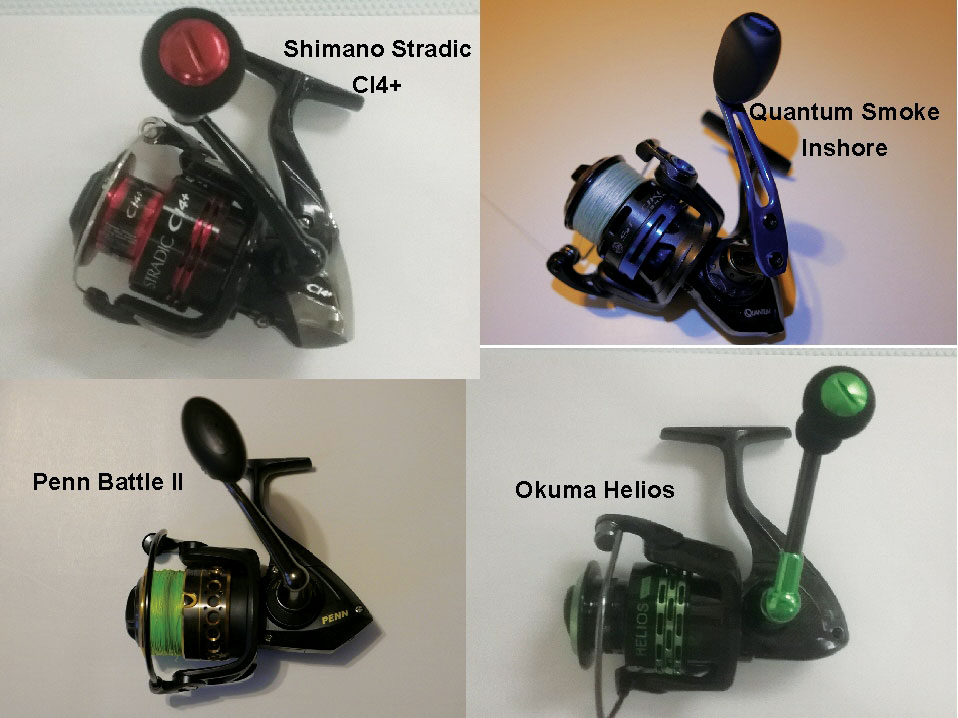By Jiggin’ Jerry
Gearing UP
It’s the start of a New Year! Christmas and other holidays, in which most people concentrate on giving more than receiving, have just passed us. And now, January is upon us – a time of year when many anglers start to look around for some of their favorite fishing gear. After all, there are a lot of close-out sales due to the New Year, and you might be able to find a great deal on that brand-new rod and reel you’ve been eyeing, which brings me to the reason for this article.
A question I often hear is, “What kind of rod and reel do I need?” That can be a tricky question. When it comes to inshore fishing, the rod and reel needed depends on what type or style of inshore fishing you would like to do. For instance, if you enjoy throwing artificial lures, there are a few things you need to know about that particular style of rod and reel. There are three rod lengths often used for this task. They range from 6 to 8 feet in length and are usually in the medium-light to medium-heavy category, but the actual weight of the rod blank is made of some of the lightest material. The guides on these rods are usually smaller and lighter, and with some of the newer technology, they will be built with micro guides. This will help reduce wrist and arm fatigue from repetitive casting.
A reel designed for throwing artificials will be lightweight and will usually have a decent amount of quality ball bearings installed in its construction, which helps with the reel’s longevity due to the repetitive opening and closing of the bale and the constant retrieve of the reel. In three hours of fishing with artificials, an angler can cast over 300 times. For artificials, I personally use the ALX Boku in a 7-foot, 6-inch length and the ALX Zolo in the 7-foot length matched with two lightweight Shimano reels. I also enjoy a 7-foot custom ultralight rod paired with the Quantum Smoke inshore reel.
These are just a few examples of the rod styles to which I am referring. There is a large variety of brands from which to choose, and part of the fun is looking around at all your options. If you fish more conventionally, like using bottom rigs with live bait or cut bait, your rods can be heavier and have larger guides, which will help with greater diameter fishing line sizes. With the heavier rod, you can use a heavier reel with less ball bearings and with larger spool sizes that will accommodate more yardage of fishing line to help with continued breakoffs or that occasional long run the fish will go into before you get to your rod.
Some anglers may also wonder why you would use heavier fishing line for bottom rigs. For example, you have a 7-foot rod rated for 30-pound test, paired with a Penn Battle reel size 40 with 25-pound test monofilament, you are using a double bottom rig with two cut pieces of mullet, then you drop it down into the water until it stops on the bottom, either off a boat, off a pier, or just casting out off a beach. In most cases, the average angler will not sit and hold this rod in their hands, rather they will sit it in a rod holder, or lay it up on a railing, loosen the drag system, and wait.
The heavier line will come in handy, not just because of the size of the fish, but because of debris. The fish will take off and run, and the line will cross oysters, barnacles, grass, pilings, footers and more. The heavier line will become scraped, cut and damaged but still maintain enough of a diameter to land your fish.
Surf fishing rods are set up with even larger reels, longer rods, and larger guides. The reels are not necessarily heavier but range between sizes from 5,000 to 8,000, holding at least 300 yards of 20-pound monofilament. Pairing these with a 10- to 12-foot surf rod helps aid in the great casting distances required to reach your mark. Depending on the beach’s location, there are drop offs and holes from 60 to 80 yards off the beach. These would be considered one of the surf angler’s targets.
While using a longer rod for surf fishing enables you to increase your casting distance, another advantage is that it helps make fighting the fish in the surf easier by keeping the rod straight up and down in the fight, keeping your fishing line from laying in the sand and the washout, and keeping it from being buried, which could all result in the loss of a great fish.
Hopefully, I have shed a little light on the differences in the types of rods and reels that are available. So, when you are looking for a new rod and reel at a sporting goods store, a local tackle shop, or surfing online, just remember what you’re fishing for and what style of fishing you want to do. After all, you might just want all of them. Until next time, good luck out there and have fun fishing!
Rod and Reel Combo

